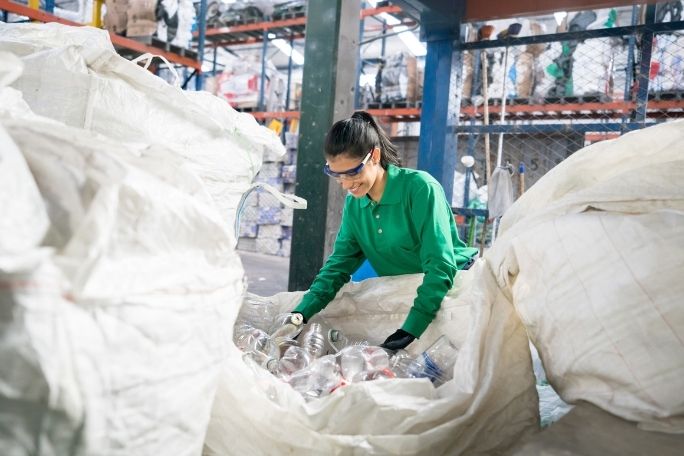Lesson summary
In this lesson, students investigate the environmental impacts of bottled water. They conduct a ‘5 whys’ investigation into some of the reasons why people use bottled water, then watch a video that explores what happens to plastic bottles once they’ve been thrown away. Students then explore the concept of life cycle analysis and work in groups to create a 3D model of a bottled water life cycle. Their aim is to encourage others to work towards closing the recycling loop by purchasing beverage bottles made from recycled plastic.
Learning intentions:
Students will...
- understand the concept of closing the recycling loop
- be able to communicate the value of closing the recycling loop to others
- be able to create a representation of the life cycle of a plastic bottle
Success criteria:
Students can...
- create a model to represent and compare the life cycles of plastic bottles made from non-recycled materials with bottles made from recycled materials
- share the value of closing the recycling loop with their peers
Lesson guides and printables
Curriculum links
Select your curriculum from the options below.
Lesson details
Curriculum mapping
Australian curriculum content descriptions:
Year 7 Science:
- Some of Earth’s resources are renewable, including water that cycles through the environment, but others are non-renewable (ACSSU116).
- People use science understanding and skills in their occupations and these have influenced the development of practices in areas of human activity (ACSHE121).
- Construct and use a range of representations, including graphs, keys and models to represent and analyse patterns or relationships in data using digital technologies as appropriate (ACSIS129).
Year 8 Science:
- Chemical change involves substances reacting to form new substances (ACSSU225).
- Scientific knowledge has changed peoples’ understanding of the world and is refined as new evidence becomes available (ACSHE134).
- Solutions to contemporary issues that are found using science and technology, may impact on other areas of society and may involve ethical considerations (ACSHE135).
Syllabus outcomes: SC4-12ES, SC4-13ES, SC4-7WS, SC4-16CW, ACSHE134, SC4-11PW.
General capabilities: Literacy, Critical and Creative Thinking, Ethical Understanding.
Cross-curriculum priority: Sustainability.
Relevant parts of Year 7 Science achievement standards: Students analyse how the sustainable use of resources depends on the way they are formed and cycle through Earth systems. Students describe situations where scientific knowledge from different science disciplines and diverse cultures has been used to solve a real-world problem. They communicate their ideas, methods and findings using scientific language and appropriate representations.
Relevant parts of Year 8 Science achievement standards: By the end of Year 8, students compare physical and chemical changes and use the particle model to explain and predict the properties and behaviours of substances. They explain how evidence has led to an improved understanding of a scientific idea and describe situations in which scientists collaborated to generate solutions to contemporary problems. They reflect on implications of these solutions for different groups in society.
Unit of work: Visy Education – Secondary Science.
Time required: 120 mins.
Level of teacher scaffolding: Medium – teacher will facilitate an innovative design process.
Resources required
- Student Worksheet (one copy per student).
- Device capable of presenting a website to the class.
- Materials for making a 3D model (suggest using materials commonly found in a recycling bin).
- ‘The Role Of Recycled Plastics In Closing The Loop’ article (one per pair)
Skills
- Communication
- Critical thinking
- Ethical understanding
- Social skills
Additional info
This lesson has been developed in partnership with Visy. For over 70 years Visy has been committed to finding sustainable solutions for Australia and New Zealand’s recyclables and helping to reduce local landfills. Visy collects, receives and sorts paper, cardboard, glass, plastics, steel and aluminium from households, businesses and schools with the purpose of reusing these products in the re-manufacture of new packaging products.


Welcome back!
Don't have an account yet?
Log in with:
Create your free Cool.org account.
Many of our resources are free, with an option to upgrade to Cool+ for premium content.
Already have an account?
Sign up with:
By signing up you accept Cool.org's Terms and Conditions(Opens in new tab) and Privacy Policy(Opens in new tab).